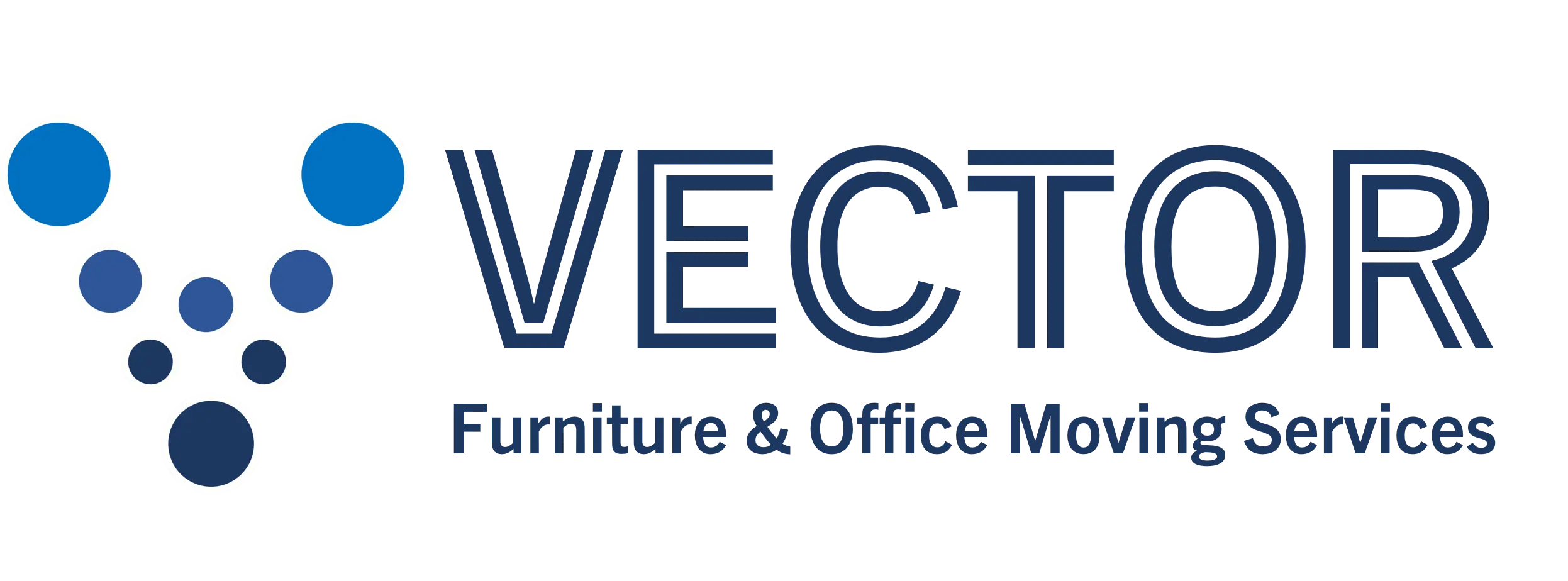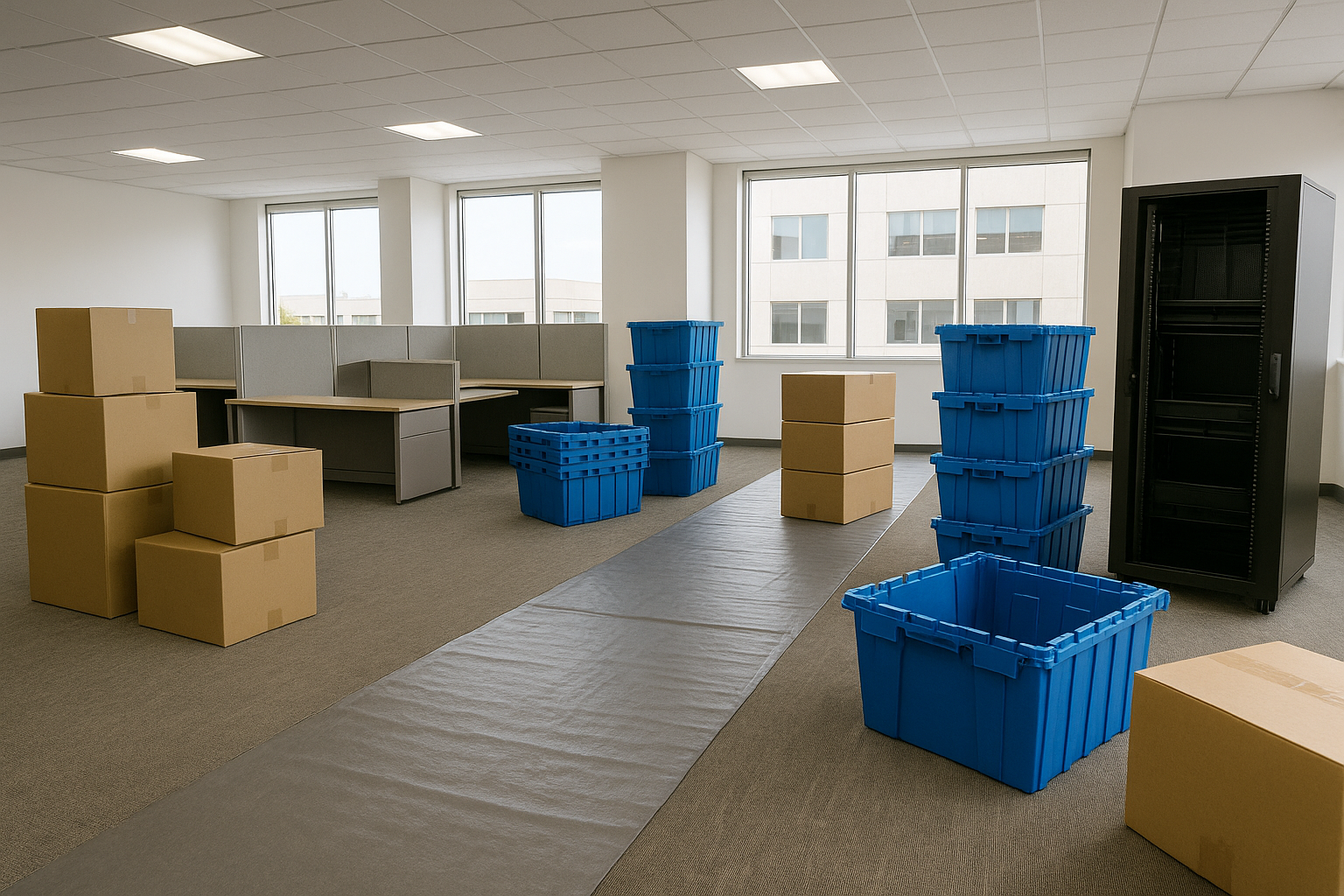The Ultimate Office Installation Playbook
Plan and execute office installations with a proven sequence, quality control checklists, crew standards, and Day One readiness. From receiving to punch close, use this playbook from Vector Installation Services.
Executive summary
- Plan access, labeling, and site rules before the first truck arrives
- Use carton level receiving with photos to prevent missing parts
- Sequence the floor in zones to reduce rework and protect other trades
- Close punch items before handoff and train users on day one tasks
- Track production rates every day so schedule and budget stay accurate
Who this guide helps
- Operations leaders coordinating a new office or a reconfiguration
- Facility managers planning phased moves across multiple floors
- Designers and dealers who need a reliable installation partner
- Commercial tenants preparing for move in with tight schedules
Core outcomes you should expect
- Clean and accurate receiving with real time documentation
- Zero surprise delivery fees and transparent scope control
- A sequenced installation plan that reduces idle time
- Punch lists closed before handoff
- Day One readiness with clear labeling and user guides
Phase 1. Preplanning and site readiness
Goals
- Confirm schedule, scope, and site rules to avoid delays
- Lock in access for elevators and loading docks
- Standardize labeling so every asset lands in the right spot
Checklist
- Final floor plan with power and data locations
- Building access hours and certificate of insurance requirements
- Elevator reservations and dock instructions
- Parking plan for crews and trucks
- Staging zones and debris removal plans
- Labeling convention for rooms, workstations, and assets
- Safety and housekeeping rules for the site
Phase 2. Receiving, storage, and quality control
A dependable warehouse and receiving process protects your budget.
Best in class receiving looks like this
- Advance shipment notice match for every delivery with carton photos
- Damage inspection with same day reporting to the dealer or the manufacturer
- Barcoded intake so pallets and cartons are easy to find fast
- Climate controlled storage for finishes and sensitive components
- Weekly inventory snapshots for project stakeholders
Pro tip: Ask for carton photos and a live inventory link. Early visibility is the easiest way to stop surprises.
Phase 3. Installation sequencing and field management
A thoughtful sequence reduces rework and protects other trades.
Recommended order of operations
- Mark staging zones and protect floors
- Install spines and power bases
- Build panels and frames
- Place worksurfaces and storage
- Mount overheads and accessories
- Cable management and power checks
- Final leveling and alignment
Field standards that keep quality high
- Daily start up huddle to confirm goals and hazards
- Photos at milestones for quick remote approvals
- End of day broom clean and waste removal
- Rolling punch list tracked in a shared log
Phase 4. Testing, training, and handoff
The project is complete when users can sit down and work without friction.
Acceptance criteria
- All stations leveled and powered
- Keys and spares tagged and logged
- Monitor arms, keyboard trays, and task lights adjusted for ergonomics
- White glove wipe down of touch surfaces
- Handoff walk with facilities and a signed completion form
User enablement
- Quick start cards at each station
- Five minute coaching on sit stand desks and cable management
- Service contact info posted in break areas
Roles and responsibilities
| Role | Primary responsibilities | Success measures |
|---|---|---|
| Project Manager | Timeline, scope, communication | Zero schedule slippage, clear updates |
| Warehouse Lead | Receiving, inventory, staging | Accurate counts, damage resolved fast |
| Field Supervisor | Crew leadership, safety, quality | Daily goals met, clean site, low rework |
| Installer | Assembly, adjustments, cleanup | Correct builds, neat work area |
| Client Rep | Approvals, access, decisions | Timely responses, informed signoff |
Budget control and risk reduction
- Confirm unit counts early and freeze scope before ordering
- Ship complete model sets to avoid piecemeal labor
- Hold a contingency reserve for building surprises
- Track daily production rates to forecast labor in real time
- Close punch items before you release final payment
Timeline example for a one hundred station installation
Day 1. Receive and stage first wave. Protect floors. Mark zones
Day 2. Spines, power bases, and panel frames
Day 3. Worksurfaces, storage, and overheads
Day 4. Accessories and cable management
Day 5. Testing, wipe down, punch close, and handoff
Pricing and timelines 101
These ranges help planning. Actuals depend on product line, access, and power readiness.
- Open plan benching installs twenty five to forty stations per day with a six person crew when power and data are pre run
- Panel systems install fifteen to twenty five stations per day with a six person crew
- Private office casegoods install eight to twelve rooms per day with a four person crew
- Add twenty to thirty percent time for high security buildings or limited dock hours
Production baselines we track on site
- Panel build rate six to eight stations per two person team per day in open plan with power pre pulled
- Cable management and device checks thirty to forty stations per two person team per day in benching layouts
- Punch close rate sixty to eighty items per day with a two person quality team
Scope guardrails and change orders
Included
- Assembly and placement per approved plan
- Anchoring per manufacturer guidance where required
- Floor protection and daily housekeeping
Not included
- Electrical terminations and core drilling
- Low voltage terminations and network configuration
- Furniture warranty claims that are not related to installation
Change order flow
- Field supervisor flags scope variance with photos
- Project manager documents quantity and labor impact and requests written approval
- Work resumes once approval is received
Risk register and mitigation
- Elevator capacity too low. Mitigation: partial loads and extra trips built into schedule
- Missing parts discovered at opening. Mitigation: carton photos at receiving and early ASN match
- Tight dock windows. Mitigation: split deliveries and pre staging in warehouse
- Floor protection failure. Mitigation: use Ram Board or one eighth inch Masonite with taped seams on carpet tile
- Late plan changes. Mitigation: daily plan review and cut off time for revisions
Warranty and post move support
- Punch list closed within three business days
- One courtesy adjustment visit within thirty days
- Service ticket response within one business day
Compliance and wellness
- Follow OSHA guidance for material handling and ladder safety
- Select products that align with BIFMA standards
- Align with WELL Building ergonomics for user comfort
Outbound resources
- OSHA material handling basics https://www.osha.gov/etools/hospital/central-supply-material-handling
- BIFMA standards overview https://www.bifma.org/page/standards
- International WELL Building Institute guidelines https://www.wellcertified.com
Internal links
- Receiving and Storage services https://www.vectorinstallations.com/services/receiving-and-storage
- Office Reconfiguration services https://www.vectorinstallations.com/services/office-reconfiguration
- Office Relocation services https://www.vectorinstallations.com/services/office-relocation
- Decommission services https://www.vectorinstallations.com/services/decommission
FAQ
- How long does a one hundred station install take?
Most projects finish in five working days with a six to ten person crew when power and data are ready and access is open all day. - What is included in standard installation?
Assembly and placement per plan, anchoring where required, floor protection, cleanup, and a signed handoff. - How do you handle damage found at receiving?
We document with photos on the same day and coordinate with the dealer or the manufacturer while we stage alternative work so the crew stays productive. - How many installers are needed per fifty stations?
Plan five to six installers for panel systems and four to five for benching when power is pre run.
Glossary
ASN. Advance shipment notice used to match expected cartons to delivered cartons
Spine. The main powered panel run that feeds workstations
Punch list. The rolling list of items to correct before handoff
HAT. Height adjustable table
COI. Certificate of insurance required by many buildings
Why teams choose Vector Installation Services
- Large trained crew capacity that scales to urgent schedules
- Real time communication with photo updates and shared logs
- Secure warehouse with carton level tracking
- Proven playbooks for new installs and complex reconfigurations
- Respect for your building and your people
Learn more about our services at Vector Installation Services.
______________________________________________________________________________________________________________
Ready to Simplify Your Office Installation Work?
Contact Vector Installations today for a free consultation!
Visit us at Vector Installations for helpful resources and to learn more about our services.

